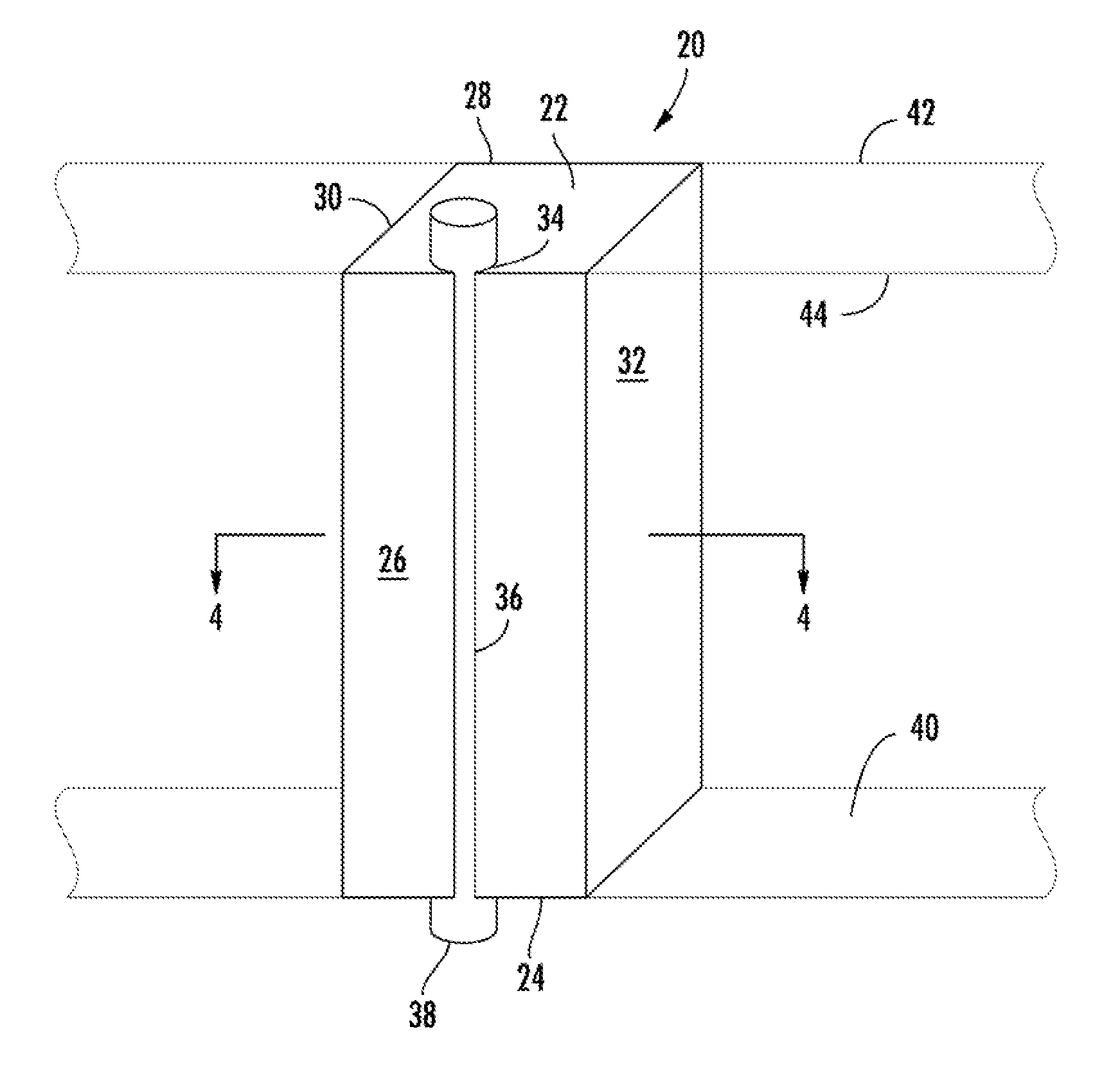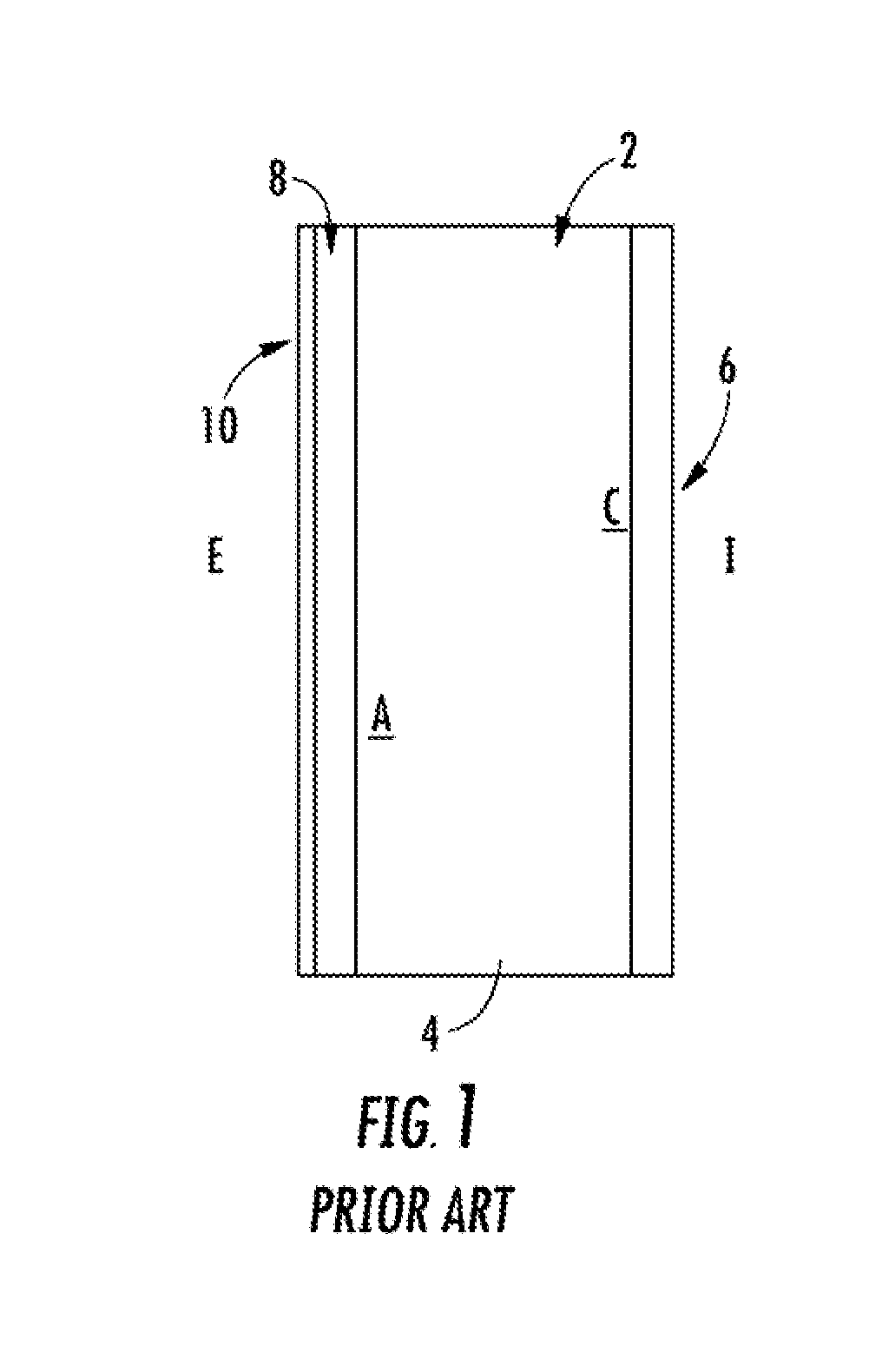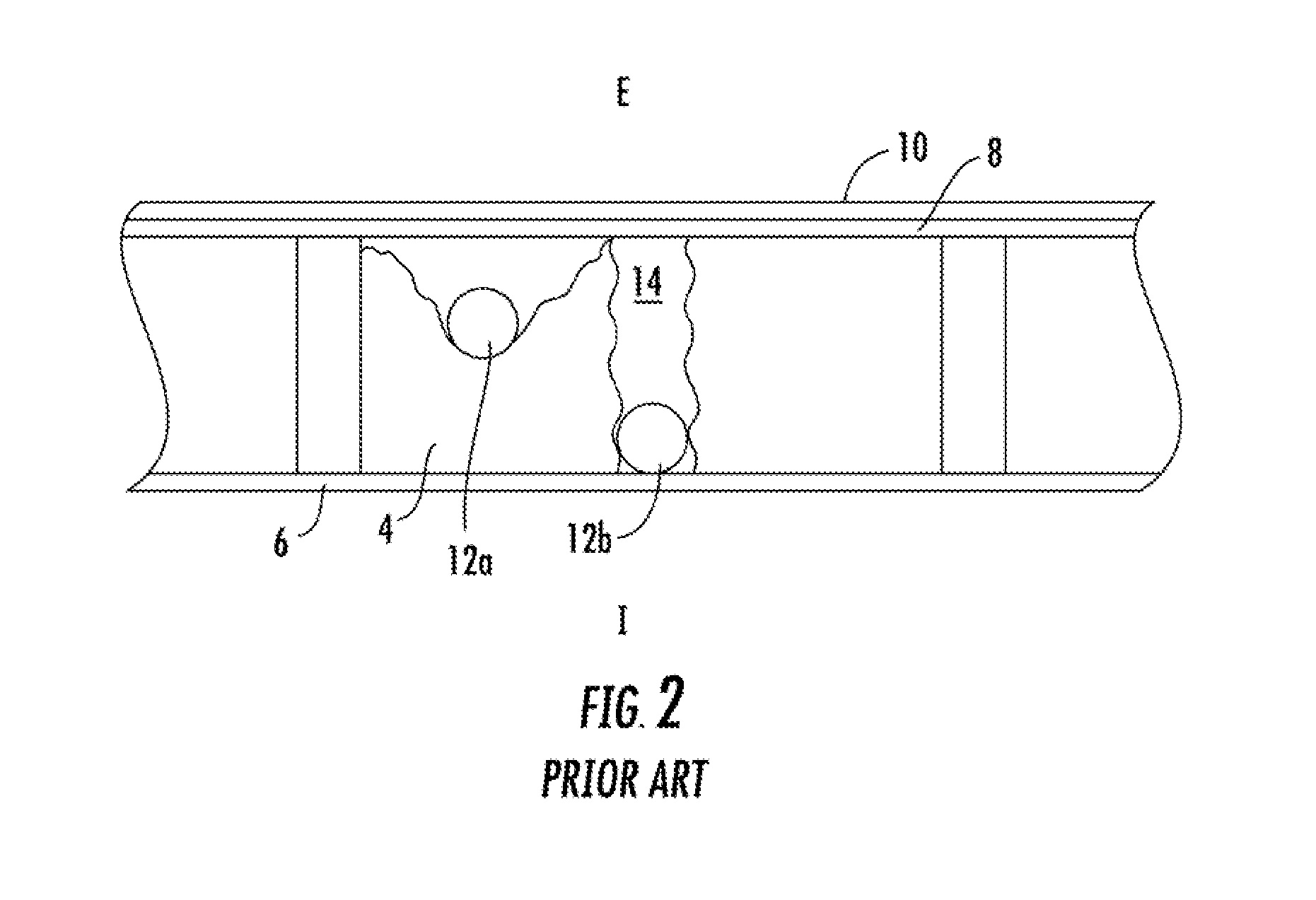Pipe insulation system
a technology of pipe insulation and pipe body, which is applied in the direction of service pipe systems, pipe heating/cooling, mechanical equipment, etc., can solve the problems of not always meeting the theoretical design requirements, code does not provide any specific direction, and extensive building damage, etc., to achieve the effect of facilitating heat transfer
- Summary
- Abstract
- Description
- Claims
- Application Information
AI Technical Summary
Benefits of technology
Problems solved by technology
Method used
Image
Examples
Embodiment Construction
[0027]Now referring to the drawings, method and system for insulating piping installed in an exterior wall is generally shown and illustrated. As was stated above, the present invention generally provides an improved method and system for effectively insulating piping located in an exterior wall or ceiling construction in a manner that protects the piping from freezing.
[0028]Turning to FIG. 3, it can be seem that in its most general form, the system of the present invention provides for an insulation block 20 that is dimensioned particularly for installation into a building wall cavity. The insulation block 20 is generally regular in cross-section and is longitudinal extending from a proximal end 22 to a distal end 24. The insulation block 20 includes a front surface 26, a rear surface 28 and two side surfaces 30, 32 that all extend along a length of the insulation block 20 between the proximal 22 and distal 24 ends. The insulation block 20 can be seen to include at least one cavity...
PUM
 Login to View More
Login to View More Abstract
Description
Claims
Application Information
 Login to View More
Login to View More - R&D
- Intellectual Property
- Life Sciences
- Materials
- Tech Scout
- Unparalleled Data Quality
- Higher Quality Content
- 60% Fewer Hallucinations
Browse by: Latest US Patents, China's latest patents, Technical Efficacy Thesaurus, Application Domain, Technology Topic, Popular Technical Reports.
© 2025 PatSnap. All rights reserved.Legal|Privacy policy|Modern Slavery Act Transparency Statement|Sitemap|About US| Contact US: help@patsnap.com



